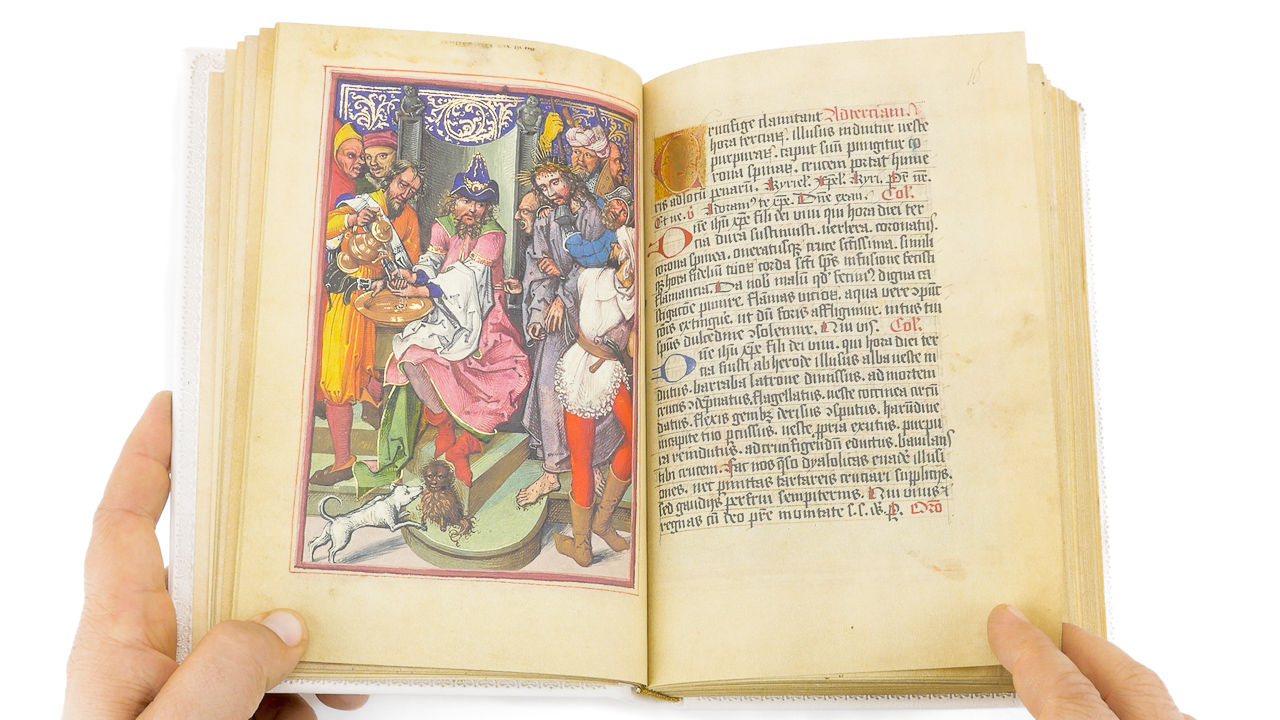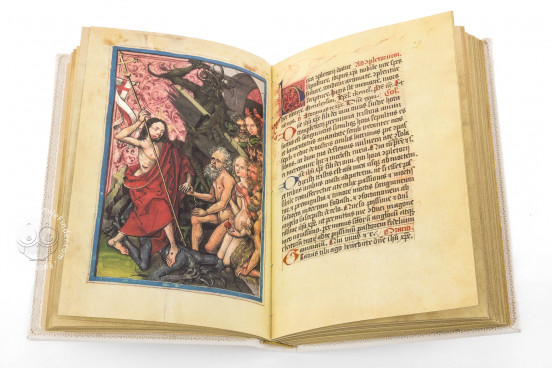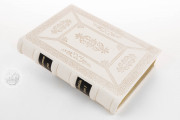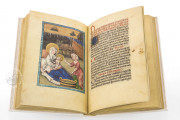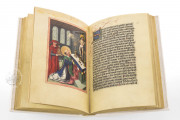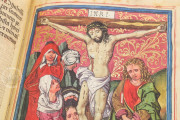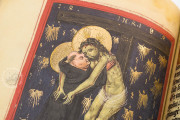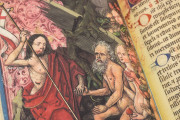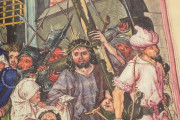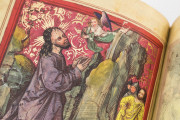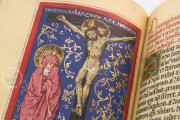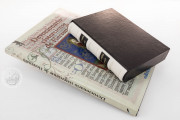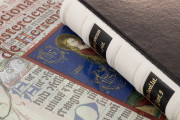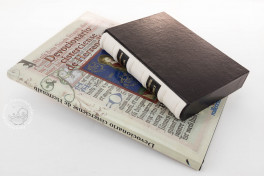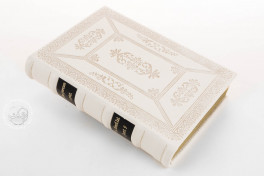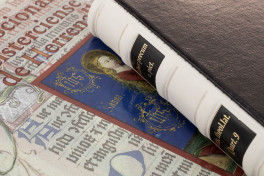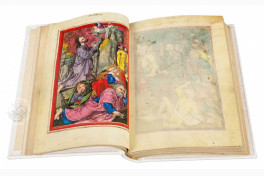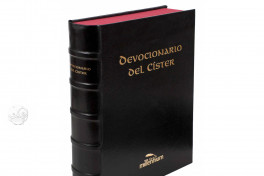The Herrenalb Prayer Book is a testament to early modern Cistercian spirituality and the thriving culture of the manuscript book as the printed book came into its own. Completed at the Cistercian monastery of Herrenalb in southwestern Germany in 1484, the Christian prayer book boasts thirty full-page miniatures, the very finest of which are based on engravings by the contemporary master Martin Schongauer. The miniatures are remarkable for their direct and expressive rendition of the book's pious themes, most set against backgrounds embellished with gold filigree arabesques.
The miniatures reflect the manuscript's textual content, with subjects from the Passion of Christ (fols. 8v-32r), the life of the Virgin Mary (fols. 32v-46r), the lives of the saints (fols. 46v-66r), and special themes (fols. 66v-103v).
Christ Embraces Saint Bernard
Two images are linked to legends associated with the Cistercian order's early leader, Saint Bernard of Clairvaux—The Virgin Breastfeeding the Infant Christ (fol. 37v) and Christ Embracing Saint Bernard (fol. 72v).
The miniature of Saint Bernard accepting the burden of the body of the crucified Christ introduces a series of prayers associated with the saint. The faces of Bernard and Christ meet in a near kiss, the saint's pinkish skin contrasting with the greenish flesh of the dead Christ. The contrast is especially effective because of the similarity of their large overlapping gold halos. The miniature, dated 1484, must have been one of the last executed.
Four Artists
The paintings are thought to be the work of four lay artists working in Strasbourg or the northern upper Rhine region and contracted by the abbey for the work. The ablest of these four painted the fourteen miniatures of the Passion accompanying the Hours of the Cross. The compositions of at least twelve of the scenes, which extend from the Agony in the Garden (fol. 8v) to the Resurrection (fol. 26v), follow closely the compositions of engravings on their subjects by Martin Schongauer. The painter often exaggerated the facial features of Christ's torturers and the gestures of Roman soldiers, and he usually cropped the scenes closer to the action than his print models, increasing their affective potential.
Johannes Zürn, Scribe and Designer?
The manuscript's colophon identifies Johannes Zürn, cantor at Herrenalb, as the scribe. Zürn may have been responsible for compiling the manuscript's devotional texts, and he may have also directed the placement and subjects of the book's miniatures. A series of German-language inscriptions appears near the top edge of some pages with miniatures. These served as instructions for the painters about what subject to paint.
Two Scribes, Two Scripts, Two Years
The manuscript's main Latin text was mostly written by Zürn in Gothic Textualis. He left twenty-nine ruled pages blank before the few closing texts, presumably so that others could add prayers later. And, indeed, a second scribe—writing in a Gothic Cursiva known as Bastarda—wrote two prayers (fols. 66v-68r) on four of those blank pages.
The colophon reports that the manuscript was finished in 1484, but the dates 1482 and 1483 are written elsewhere in the manuscript, and it appears that the writing was begun and probably largely finished in 1482, with the embellishment of the book requiring at least another year of work.
Patronage Attested in the Colophon
The colophon of the Herrenalb Prayer Book records that Ludwig von Bruchsal, a legal official in Merklingen, paid for the manuscript's creation, not seeking "praise or glory or honor" but for future generations. The current binding of blind-tooled and stamped white goatskin over pasteboard is reported to be the work of Carl Ernst Lehmann (1807-1848).
We have 2 facsimiles of the manuscript "Herrenalb Prayer Book":
- Devocionario Cisterciense de Herrenalb (Library Edition) facsimile edition published by Millennium Liber, 2017
- Devocionario Cisterciense de Herrenalb facsimile edition published by Millennium Liber, 2017

